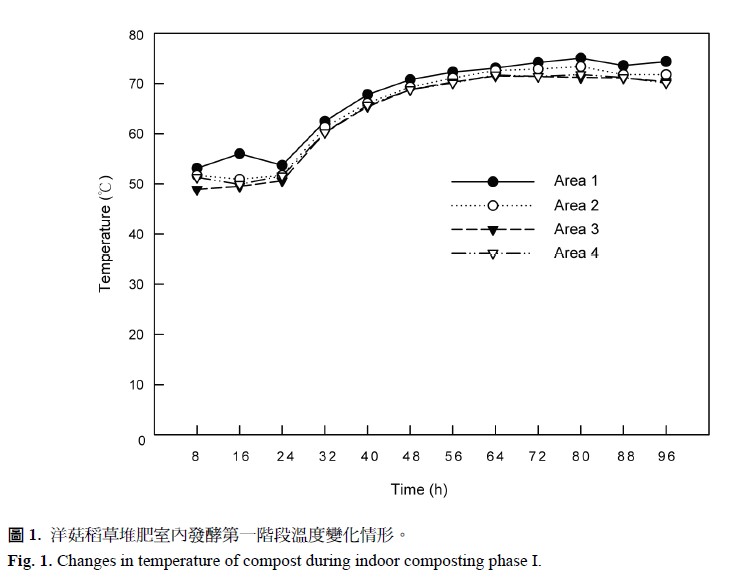All issues
Author:Jin-Tong Chen*, Jin-Torng Peng, Meei-Hsing Chen, and Shiuan-Yuh Chien
Abstract:
Indoor composting and conventional composting for white button mushroom (Agaricus bisporus) cultivation during composting phase I were compared based on chemical composition, time of composting, and yields of mushrooms. Chemical compositions were similar between indoor and conventional composts. The C/N ratios were 19.0 for conventional and indoor compost. Indoor compost was ready for use in 18 days, while conventional compost required more than 30 days of production time. The yields of mushroom strain MS and F4KN cultivated on indoor compost were higher than those cultivated on conventional compost by 10.8% and 29.6% (P < 0.05), respectively. This study suggests that indoor composting is a better practice for mushroom production because it shortens the period of composting, produces higher quality of compost and increases mushroom yield.
Key words:Indoor composting, Compost, Agaricus bisporus, Yield
Download:![]() PDF Links
PDF Links
- 1. Development of Tractor-Mounted Seedling Transplanter for Sweet Potato
- 2. Synergistic Effect of Additional Gas on the Toxicity of Phosphine to Sitophilus oryzae and Sitophilus zeamais (Coleoptera: Dryophthoridae)
- 3. Effects of Temperature and Solar Radiation on Growth Traits and Plant Elements in Purple Leafy Sweet Potato

 Submit your manuscript
Submit your manuscript
 Guide for authors
Guide for authors